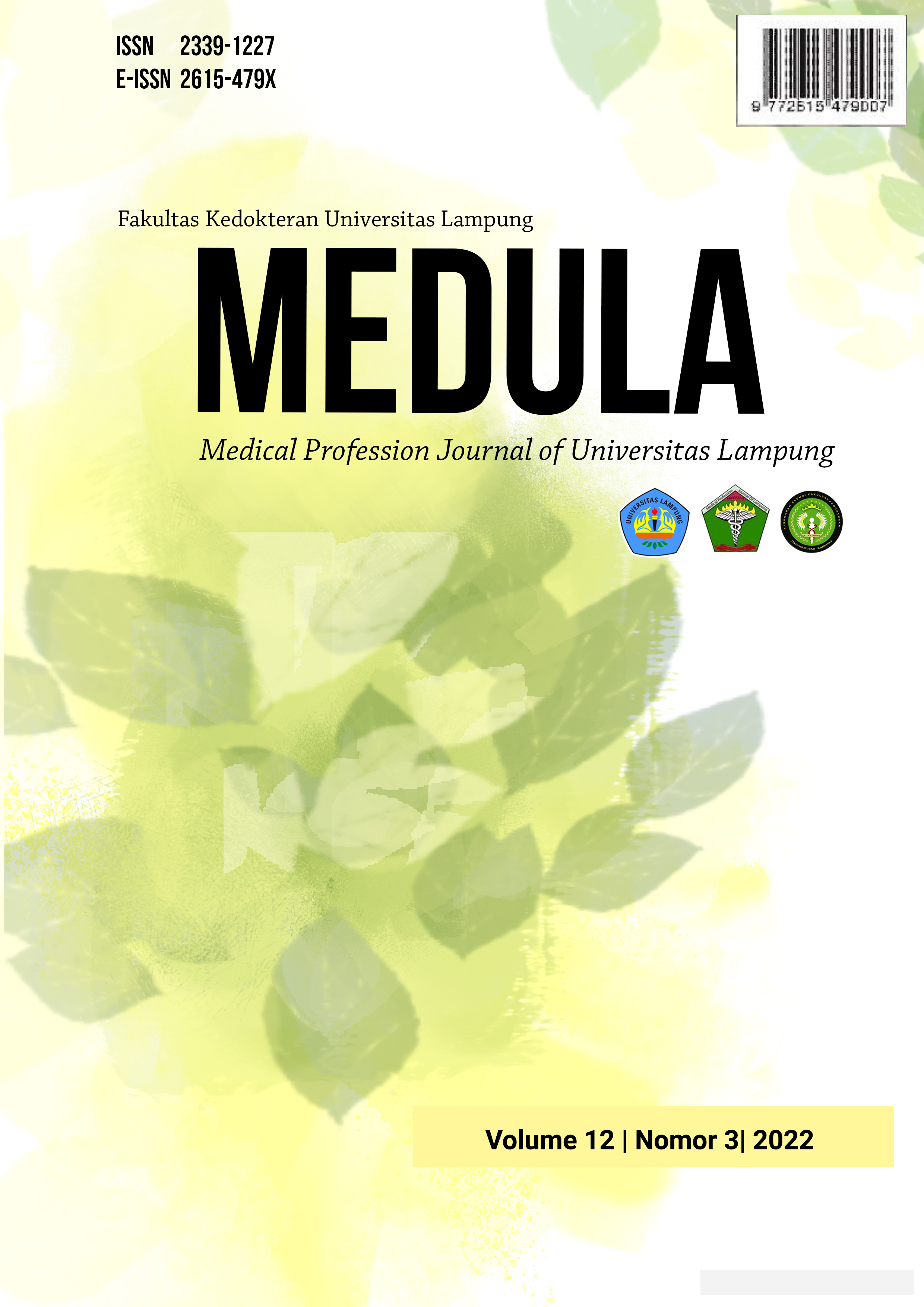Spontaneous Bacterial Peritonitis in Hepatic Cirrhosis Patients: Literature Review
DOI:
https://doi.org/10.53089/medula.v12i3.501Keywords:
Infection; peritonitis; procalcitonin; cephalosporins; cirrhosisAbstract
Bacterial infection is a complication of liver cirrhosis which accounts for 30% of deaths in the first month and 63% after the first year. The most common bacterial infection in liver cirrhosis is spontaneous bacterial peritonitis. The diagnosis is made when the polymorphonuclear ascitic leukocyte count (PMN) is >250 cells/mm3 with or without positive culture or positive ascitic culture with PMN < 250 cells/mm3. One of the markers of spontaneous bacterial peritonitis is serum procalcitonin. Procalcitonin as an acute phase reactant protein has been studied in patients with PBS. Serum procalcitonin in patients with spontaneous bacterial peritonitis was higher than in patients with uninfected ascites. Significantly higher in patients with PBS than in sterile ascites. Calcitonin is associated with an increased number of PMNs in cirrhotic liver patients with spontaneous bacterial peritonitis. Management of spontaneous bacterial peritonitis in patients with liver cirrhosis considers the speed and accuracy of diagnosis and stratification of patients who are candidates for albumin recipients. Empirical antibiotic therapy should be initiated as soon as the diagnosis of spontaneous bacterial peritonitis is made to reduce the development of complications and improve survival. First-line antibiotics are third-generation cephalosporins (cefotaxime or ceftriaxone) or piperacillintazobactam. Ceftolozane-tazobactam and ceftazidimeavibactam have been developed for carbapenem-resistant patients.
References
Shizuma, T. Spontaneous bacterial and fungal peritonitis in patients with liver cirrhosis: A literature review. World J. Hepatol. 2018;10(2):254–266.
Piano S, Singh V, Caraceni P, Maiwall R, Alessandria C, Fernandez J, et al. Epidemiology, predictors and outcomes of multi drug resistant (MDR) bacterial infections in patients with cirrhosis across the world. Final results of the “Global study”. Digestive and Liver Disease. 2018;50(1):2–3.
Fiore M, Maraolo AE, Gentile I, Borgia G, Leone S, Sansone P, et al. Current concepts and future strategies in the antimicrobial therapy of emerging Gram-positive spontaneous bacterial peritonitis. World Journal of Hepatology. 2017;9(30):1166–1175.
Piano S, Morando F, & Angeli P. Spontaneous Bacterial Peritonitis in Patients with Cirrhosis and Ascites. 2018;2(1):559–575.
Angeli P, Bernardi M, Villanueva C, Francoz C, Mookerjee RP, Trebicka J et al. EASL Clinical Practice Guidelines for the management of patients with decompensated cirrhosis. Journal of Hepatology 2019;69(2):406–460.
Piano, S., Brocca, A., Mareso, S. & Angeli, P. Infections complicating cirrhosis. Liver International. 2018;38(4).126–133.
Yang Y, Li L, Qu C, Zeng B, Liang S, Luo Z, et al. Diagnostic accuracy of serum procalcitonin for spontaneous bacterial peritonitis due to end-stage liver disease: A meta-analysis. Medical (United States). 2017;94(49):1–8.
Wu H, Chen L, Sun Y, Meng C & Hou W. The role of serum procalcitonin and C-reactive protein levels in predicting spontaneous bacterial peritonitis in patients with advanced liver cirrhosis. Pakistan Journal of Medical Sciences. 2018;32(6):1484–1488.
Josifovikj FL, Stardelova KG, Todorovska B, Dimitrova MG, Joksimovikj N, Andreevski V, et al. Diagnostic Potential of Calprotectin for Spontaneous Bacterial Peritonitis in Patients Withliver Cirrhosis and Ascites. Prilozi. 2021;42(3):97–106.
Lutz P, Nischalke HD, Krämer B, Goeser F, Kaczmarek DJ, Schlabe S, et alAntibiotic resistance in healthcare-related and nosocomial spontaneous bacterial peritonitis. European Journal of Clinical Investigation. 2017;47(1):44–52.
Fernández J, Bert F & Nicolas-Chanoine MH. The challenges of multi-drug-resistance in hepatology. Journal of Hepatology. 2017; 65(5).1043–1054.
Nadim MK, Durand F, Kellum JA, Levitsky J, O'Leary JG, Karvellas CJ, et al. Management of the critically ill patient with cirrhosis: A multidisciplinary perspective. Journal of Hepatology. 2017;64(3).717–735.
Downloads
Published
How to Cite
Issue
Section
License
Copyright (c) 2022 Medical Profession Journal of Lampung

This work is licensed under a Creative Commons Attribution-ShareAlike 4.0 International License.














